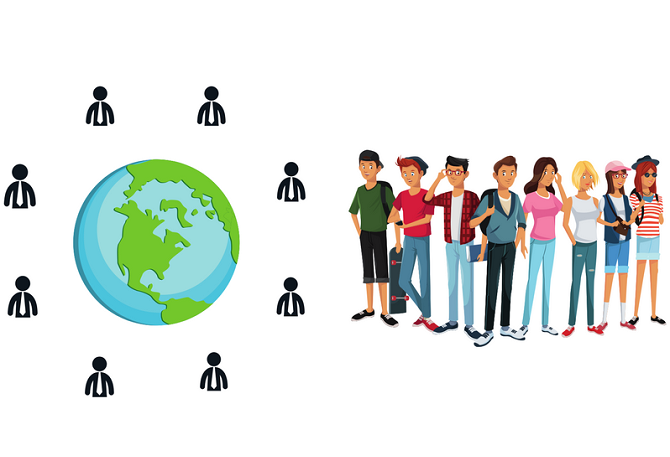Language and linguistics research is an ever-evolving field of study that is constantly adapting to new trends and topics. As technology advances and new discoveries are made, the topics of language and linguistics research are constantly changing. This article will explore some of the most popular topics in language and linguistics research today, including language acquisition, language change, language variation, language contact, and language typology. Additionally, this article will discuss the importance of language and linguistics research and how it can be used to better understand the world around us.
Exploring the Impact of Social Media on Language and Linguistics
The impact of social media on language and linguistics is a topic of increasing interest in the academic world. As the use of social media has grown exponentially in recent years, so too has the impact it has had on the way we communicate. This paper will explore the various ways in which social media has impacted language and linguistics, with a particular focus on the implications for language learning and teaching.
The first way in which social media has impacted language and linguistics is through the emergence of new words and phrases. Social media has created a platform for users to create and share new words and phrases, which can then spread quickly and become part of the mainstream language. This has led to the emergence of new slang words, such as ‘bae’ and ‘on fleek’, which have become widely used in everyday speech. This phenomenon has been referred to as ‘internet-speak’, and has been seen to have a significant impact on the way language is used and understood.
Another way in which social media has impacted language and linguistics is through the emergence of new writing styles. Social media has created a platform for users to express themselves in a more informal and creative way, which has led to the emergence of new writing styles such as ‘textspeak’ and ‘hashtagging’. These new writing styles have been seen to have a significant impact on the way language is used and understood, and have been seen to have implications for language learning and teaching.
Finally, social media has also been seen to have an impact on the way language is used in different contexts. Social media has created a platform for users to communicate in a more informal and casual way, which has led to the emergence of new forms of communication such as ‘tweeting’ and ‘texting’. This has been seen to have implications for the way language is used in different contexts, such as in the workplace or in formal settings.
In conclusion, it is clear that social media has had a significant impact on language and linguistics. The emergence of new words and phrases, new writing styles, and new forms of communication have all been seen to have implications for language learning and teaching. As such, it is important for educators and language learners to be aware of the impact of social media on language and linguistics, in order to ensure that they are able to effectively communicate in the modern world.
Investigating the Role of Technology in Language Acquisition
The role of technology in language acquisition has been the subject of much research in recent years. As technology has become increasingly ubiquitous in our lives, its potential to facilitate language learning has become increasingly apparent. This paper will explore the various ways in which technology can be used to support language acquisition, as well as the potential benefits and drawbacks of such approaches.
One of the most common ways in which technology is used to support language acquisition is through the use of online language learning tools. These tools can range from simple vocabulary and grammar drills to more complex interactive activities. Such tools can be used to supplement traditional language learning methods, providing learners with additional practice and feedback. Additionally, they can be used to provide learners with access to a wide range of language resources, such as dictionaries, grammar guides, and audio recordings.
Another way in which technology can be used to support language acquisition is through the use of virtual reality (VR) and augmented reality (AR) applications. These applications can be used to create immersive learning environments in which learners can interact with virtual characters and objects. Such applications can be used to provide learners with a more engaging and interactive learning experience, as well as to provide them with a more realistic context in which to practice their language skills.
Finally, technology can also be used to facilitate communication between learners and native speakers. Online language exchange programs, for example, can be used to connect learners with native speakers who can provide them with feedback and guidance. Additionally, social media platforms can be used to connect learners with native speakers who can provide them with additional practice and support.
Overall, technology can be a powerful tool for language acquisition. However, it is important to note that technology should not be used as a replacement for traditional language learning methods. Rather, it should be used to supplement and enhance existing language learning approaches. Additionally, it is important to consider the potential drawbacks of using technology for language acquisition, such as the potential for distraction and the potential for learners to become overly reliant on technology.
Examining the Relationship Between Language and Culture
Language and culture are inextricably linked, with each influencing the other in a variety of ways. Language is a tool for communication, and it is through language that culture is expressed and shared. Culture, in turn, shapes the way language is used and understood. This relationship between language and culture is complex and multifaceted, and it is important to understand how the two interact in order to gain a better understanding of both.
At the most basic level, language is used to communicate cultural values, beliefs, and norms. Through language, people are able to express their cultural identity and share their experiences with others. Language also serves as a way to transmit cultural knowledge from one generation to the next. For example, certain words or phrases may be used to describe a particular concept or event that is unique to a particular culture. This allows people to pass on their cultural heritage and values to future generations.
In addition, language can be used to create a sense of belonging and identity within a culture. By using certain words or phrases, people can identify themselves as members of a particular group or culture. This can be seen in the way certain dialects or accents are used to distinguish between different cultural groups. For example, in the United States, people from the South may use different words or phrases than those from the North. This helps to create a sense of belonging and identity within each region.
Finally, language can also be used to create a sense of unity within a culture. By using the same words or phrases, people can come together and form a shared understanding of their culture. This can be seen in the way certain languages are used to unite people from different countries or regions. For example, Spanish is spoken by people from many different countries in Latin America, and it serves as a way to bring them together and create a sense of unity.
In conclusion, language and culture are closely intertwined, with each influencing the other in a variety of ways. Language is used to communicate cultural values, beliefs, and norms, and it is also used to create a sense of belonging and identity within a culture. Finally, language can be used to create a sense of unity within a culture. Understanding the relationship between language and culture is essential for gaining a better understanding of both.
Analyzing the Effects of Globalization on Language and Linguistics
Globalization has had a profound effect on language and linguistics. It has changed the way people communicate, the way they learn, and the way they interact with one another. This paper will analyze the effects of globalization on language and linguistics, focusing on the impact of technology, the spread of English, and the emergence of new languages.
Technology has had a major impact on language and linguistics. The internet has made it easier for people to communicate with one another, regardless of their location. This has led to the emergence of new forms of communication, such as text messaging, instant messaging, and social media. These new forms of communication have had a significant impact on language, as they have allowed for the rapid spread of new words and phrases. Additionally, technology has enabled people to access a variety of language-learning resources, such as online courses and apps. This has made it easier for people to learn new languages and has led to an increase in multilingualism.
The spread of English has also had a major impact on language and linguistics. English has become the dominant language of international communication, and it is now spoken by more than 1.5 billion people worldwide. This has led to the emergence of new varieties of English, such as Indian English and Singaporean English. Additionally, English has become the language of choice for many international businesses, which has led to the emergence of a new form of English known as “Globish”.
Finally, globalization has led to the emergence of new languages. As people from different cultures and countries interact with one another, they often create new languages that combine elements from different languages. This has led to the emergence of new languages, such as pidgins and creoles. Additionally, globalization has led to the emergence of new dialects, as people from different regions adopt words and phrases from other languages.
In conclusion, globalization has had a profound effect on language and linguistics. It has changed the way people communicate, the way they learn, and the way they interact with one another. Technology has enabled people to access a variety of language-learning resources, while the spread of English has led to the emergence of new varieties of English. Finally, globalization has led to the emergence of new languages and dialects.
Investigating the Role of Language in Cognitive Development
Language plays a critical role in cognitive development, as it is the primary means by which humans communicate and interact with the world around them. Research has shown that language is closely linked to the development of cognitive skills such as problem solving, memory, and abstract thinking. This paper will explore the role of language in cognitive development, focusing on the ways in which language influences the development of cognitive skills.
First, language provides a means of communication, allowing individuals to share information and ideas with others. This is important for cognitive development, as it allows individuals to learn from one another and gain new perspectives. Additionally, language provides a way for individuals to express their thoughts and feelings, which can help them to better understand their own thoughts and emotions.
Second, language provides a way for individuals to organize and structure their thoughts. By using language, individuals can create mental models of the world around them, which can help them to better understand and remember information. Additionally, language can be used to create abstract concepts, which can help individuals to think more deeply and creatively.
Third, language can be used to develop problem-solving skills. By using language to explain and discuss problems, individuals can gain a better understanding of the problem and develop strategies for solving it. Additionally, language can be used to create hypotheses and test them, which can help individuals to develop critical thinking skills.
Finally, language can be used to develop memory skills. By using language to describe and discuss events, individuals can better remember them. Additionally, language can be used to create mnemonic devices, which can help individuals to remember information more easily.
In conclusion, language plays a critical role in cognitive development. By providing a means of communication, organizing and structuring thoughts, developing problem-solving skills, and improving memory, language can help individuals to develop a range of cognitive skills. As such, it is important to recognize the importance of language in cognitive development and to ensure that individuals have access to language-rich environments.
Conclusion
In conclusion, language and linguistics research is a field that is constantly evolving and growing. There are many different topics that are currently being studied, such as language acquisition, language change, language variation, language contact, language typology, and language and cognition. Each of these topics has its own unique set of challenges and opportunities for researchers to explore. As technology continues to advance, new topics and research questions will continue to emerge, making language and linguistics research an exciting and ever-changing field.
Discussion
[wpaicg_chatgpt]



